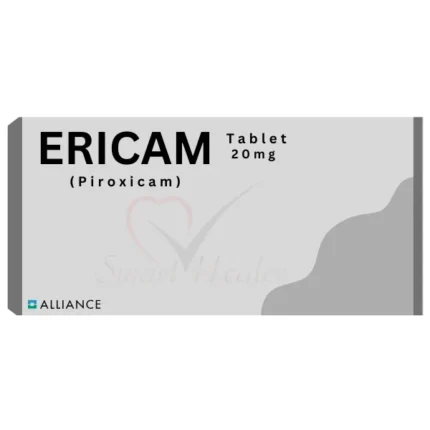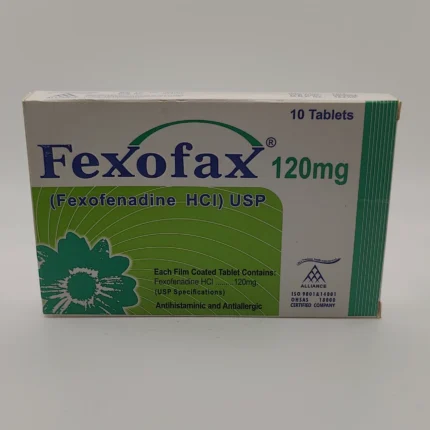Phyllocontin Continus tablets provide targeted relief for respiratory conditions common in Pakistan, where asthma and chronic bronchitis often flare up due to pollution and allergens. This sustained-release formulation of aminophylline hydrate, available in pharmacies from Lahore to Peshawar, follows DRAP guidelines as a xanthine-based bronchodilator. It helps open airways for better breathing, serving as a mainstay in pulmonology for managing bronchospasm without the need for frequent dosing.
Generic
Aminophylline Hydrate
Therapeutic Class
Xanthines – Systemic
Composition
Each Phyllocontin Continus tablet contains aminophylline hydrate 225 mg.
Description
Phyllocontin Continus tablets contain aminophylline, the salt of theophylline most commonly used for therapeutic purposes. It acts as a bronchodilator by dilating the bronchi, the air passages in the lungs, to improve breathing and ease airflow obstruction.
How It Functions
Aminophylline relaxes smooth muscles in the bronchial walls through phosphodiesterase inhibition and adenosine receptor antagonism, leading to increased cyclic AMP levels. This widens airways, reduces inflammation, and enhances diaphragmatic contractility. In Pakistan’s high-asthma burden context, as per PMDC-endorsed protocols, it offers prolonged action for steady control, particularly in chronic obstructive conditions where quick-relief inhalers alone fall short.
Common Applications
From local guidelines, Phyllocontin Continus is indicated for:
- Treatment and prophylaxis of bronchospasm associated with asthma, emphysema, and chronic bronchitis.
- Prevention of exercise-induced bronchoconstriction.
Dosage Form
Sustained-release tablet (225 mg), swallowed whole with water to maintain 12-hour intervals.
Dosage
1-2 tablets every 12 hours to ensure 24-hour protection; adjust based on response and tolerance under medical supervision.
Potential Side Effects
Common with xanthines include:
- Nausea, vomiting, or abdominal discomfort.
- Headache or restlessness.
- Tachycardia or palpitations.
Rare: Severe reactions like seizures or arrhythmias, especially at higher doses—monitor closely in sensitive patients.
Key Warnings and Precautions
Cardiac Monitoring
Caution in heart disease; watch for irregular heartbeat or chest pain.
Seizure Risk
Avoid in epilepsy history; therapeutic levels can lower seizure threshold.
Smoking and Interactions
Smokers may need higher doses due to faster metabolism; adjust with enzyme inducers.
Pregnancy
Category C—consult physician; use only if benefits outweigh risks.
Renal/Hepatic Impairment
Dose reduction often required; regular blood levels advised.
Therapeutic drug monitoring via serum theophylline levels (5-15 mcg/mL) recommended.
When It’s Not Suitable (Contraindications)
Avoid if:
- Hypersensitivity to aminophylline or theophylline.
- Active peptic ulcer or uncontrolled arrhythmias.
- Severe liver disease.
Drug Interactions
- CYP1A2 inhibitors (e.g., ciprofloxacin): Increase levels—dose adjustment needed.
- Inducers (e.g., rifampin, smoking): Decrease efficacy.
- Beta-blockers: Antagonize bronchodilation.
In Case of Overdose
Symptoms include vomiting, seizures, or hypotension; seek emergency care for activated charcoal, supportive measures, and hemodialysis if severe.
Missed Dose
Take as soon as possible unless near next dose; skip and resume schedule—do not double.
Storage and Disposal
Store at room temperature (15-30°C), protected from moisture and light. Dispose via pharmacy take-back programs.
Quick Tips
- Take with food to minimize GI upset.
- Avoid caffeine excess, as it amplifies side effects.
- Track symptoms and peak flows; report worsening.
- Consistent timing aids steady levels.
Doctor Review
Pulmonologists like Dr. Ayesha Khan at Jinnah Hospital in Lahore and Dr. Muhammad Iqbal in Rawalpindi’s OPDs prescribe Phyllocontin Continus for chronic asthma maintenance and COPD bronchospasm, valuing its 12-hour coverage but emphasizing serum monitoring due to narrow therapeutic index and variable pharmacokinetics in our population—often paired with inhaled therapies.
Laboratory Screening
To guide therapy and safety:
- Serum Theophylline Levels: Trough levels before doses.
- Liver/Kidney Function: Baseline and periodic.
- ECG: For cardiac patients.
- Pulmonary Function Tests: To assess response.
FAQs
What is Phyllocontin Continus for?
Bronchodilation in asthma, emphysema, chronic bronchitis, and exercise-induced issues.
Dosing?
1-2 tablets every 12 hours; monitor levels.
Safe in pregnancy?
Consult; potential risks.
Storage?
Room temp, dry place.
Side effects?
GI upset, headache; monitor heart.
Contraindications?
Allergy, ulcers, arrhythmias.
Disclaimer: This is product information only, not a medical prescription or advice. Consult a qualified Pakistani doctor before using Phyllocontin Continus to ensure safety. Seek immediate care for overdose symptoms or worsening breathing. Store at room temperature, away from light and moisture.








Reviews
There are no reviews yet.